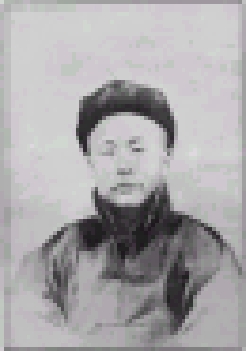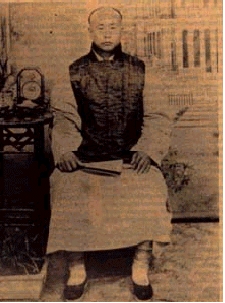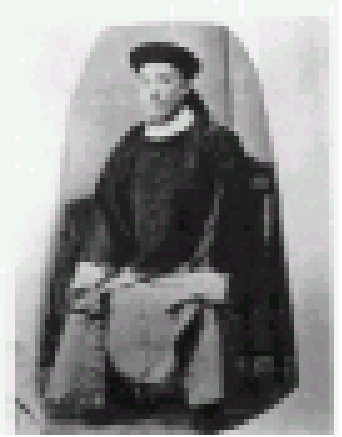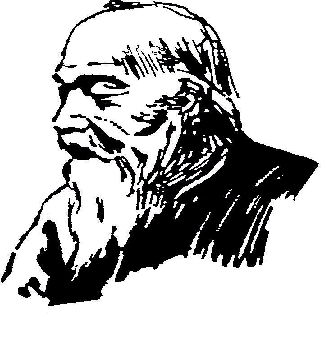HISTORY OF THE MASTERS that formed our art.
Grandmaster Huo Yan Jia (founder of Chin Woo, 1867 - 1909)was the fourth child in the family of 10 brothers and sisters. During his childhood, he frequently became ill and, as a result, was often taken advantage of by the other children in his province. Ironically, Master Huo’s father, who was teaching kungfu, refused to teach his son the martial art. Therefore the young Huo was forced to hide behind bushes and watch as his father taught other students in the courtyard. Master Huo practiced on his own for the next 10 years. His parents never discovered this until he began to fight with his peers and defeat them. Later, his father officially accepted him and taught his younger son all that he knew. One day, he fought with a foreigner and immediately gained fame. It was during this time that many foreigners were in China, and some referred to the Chinese as the ““Sick Men of Asia.”” To keep the Chinese image, Master Huo decided to organize the Chin Woo School to allow all Chinese the opportunity to learn Chinese kungfu and strengthen themselves in order to defend the country. In 1909, a European wrestler was sent to Shanghai to challenge any Chinese that would accept. News quickly spread all over Shanghai. Later, some Chinese people invited Master Huo to Shanghai to accept the challenge. He seized the opportunity and emerged victorious. This incident further escalated Master Huo’s reputation.
As word of his victory further spread, so did the Chin Woo spirit. Unfortunately, in August 1909, Master Huo died, but on March 3, 1910, Mr. Chen Gong Zhe, Mr. Yao Chan Bo and Mr. Lu Wei Chang reopened the Chin Woo School. After Master Huo Yan Jia passed away, his younger brother, Mr. Huo Yuan Siang, and his son, Mr. Huo Tong Ker, continued to teach at the Chin Woo Association. Later, many famous martial-arts masters were invited to teach in Chin Woo. Even though they came from different schools, they all followed Chin Woo regulations. Thus Chin Woo became a famous and popular martial-arts association in Shanghai. Chin Woo sponsored most of the martial-arts tournaments. However, in 1966, Shanghai Chin Woo was forced to discontinue their martial-arts activities due to communist regulations. Those restrictions were later lifted, and martial-arts activities were again alive in the Shanghai Chin Woo.

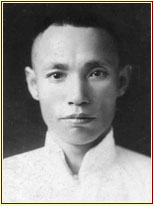
Master Ku Yu Cheong:
Master Ku was born in the late 1800s. He was head of a security guard company, a policy official and head instructor of major martial arts institutes. Master Ku was recognized by the Chinese martial arts community as having the most devastating Iron Palm techniques in the history of Kung Fu. The Northern Shaolin style of Kung-Fu was made famous by the late Grand Master Ku Yu Cheong. There are many legends about the master. According to some related by his close students, Master Ku's father was an accomplished exponent of the Tan Toi (Snapping Kicks) Kung-Fu style. When he was young, Master Ku traveled throughout Northern China to learn all the northern kung-fu systems. He was renowned for his Iron Palm techniques and the application of the long spear weapon. He organized all his learning into what is the Northern Shaolin Kung Fu of today.
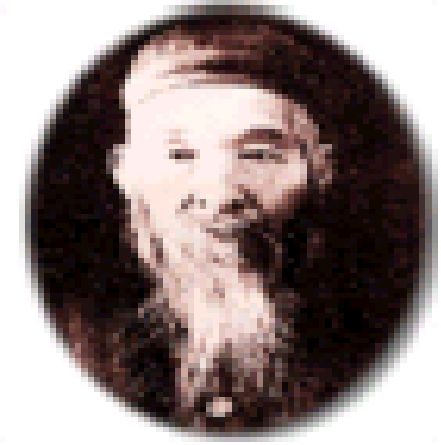
Master Sun Lutang:
By all accounts, Sun Lu Tang was an extraordinary man. Born in 1861 in Hebei Provience, Sun was the child of a poor farmer. Sun's father, recognizing the boy's intelligence, wanted to provide him with a good education. Unfortunately, he could only afford two years of formal schooling for Sun before he lost everything to poor harvests and the Qing dynasty's oppressive taxes
Here the young Sun's life begins to resemble a Kung Fu movie. After his father's death, sun, a small and frail seeming child, went to work as a servant for a cruel master with an even crueler son. The young boy worked hard and silently endured the beating until one day, while out herding sheep, he saw a group of men practicing martial arts. The rest, as the saying goes, is history.
He studied for about three years with a Shaolin master named Wu who was quite impressed with the boy and taught him quickly. When Sun's mother heard that he was studying Kung Fu, She at first objected, afraid that he would hurt himself. Then she saw how much healthier her formerly-sickly child looked and give her blessing to him to continue his studies.
One fateful day, Sun finally beat up the bully's bigger, stronger, even meaner cousin and lost his job. He and his mother went to live with a kindly uncle who owned a calligraphy shop, and here Sun's luck finally took a turn for the better. He could practice the calligraphy he learned during his two years of formal schooling, and practice the martial arts. His uncle, a prosperous businessman, introduced him to two men who were to prove very important to the youth: a scholar named Zhang who was to become Sun's father-in-law and who helped Sun continue his academic studies, and Li Kui Yuan, a master of the art of Xing Yi Chuan.
Sun Lu Tang's introduction to the internal arts through Xing Yi Quan might well be considered the true beginning of his career in the martial arts. And "career" best describes it: for the rest of his life until his death in 1933 at the age of 72, Sun Lu Tang studied, taught, lectured on, and wrote about the martial arts. He is credited with writing the first book available to the General public that grouped Xing Yi, Bagua, and Tai Chi together as internal arts. The same book, Xing Yi Quan Xue, or The Study of Form-Mind Boxing, is also considered the first written work to point out the connection between martial arts the I Ching, and Daoist philosophy.
Sun Lu Tang, through the careful reasoning, depth of through, and literary merit evident in his published works, elevated the martial arts to a field worthy of serious academic study. Nothing demonstrates this better than his development of Sun-style Tai Chi Chuan.
Though Sun-style Tai Chi Chuan is a young style, as Kung Fu style go, it is now considered one of the four major styles of tai Chi Chuan. One reason is for its quick acceptance is simple: Sun-style Tai Chi works. Another reason may be respect for the man himself. Sun Lu tang lived, studied, and guided martial arts at a crucial point in the its development.
Centuries of secrecy, of patriarchs teaching the family style only to other family members, of the masters withholding techniques from al but a very few senior students, of a body of practitioners who were generally illiterate farmers wanting merely to protect themselves from bandits, had resulted in a body of knowledge that was mostly oral and anecdotal. In addition, the persecution of the fighting monks of the Shaolin Temple further reduced the number of martial artists who were literate. Little was written down, and few were able to read what documentation did exist. The martial arts were shrouded in secrecy and suspicion.
However, the end of the Qing Dynasty found a country sorely in need of the healing qualities of Kung Fu. Years of grinding poverty, opium addiction, and national humiliation after national humiliation at the hand of the Europeans and the Japanese presented the new Republican government with a dispirited, unhealthy populace, known by the unflattering term, "the sick men of Asia."
Sun, and other top martial artists, were invited to teach martial arts in the schools. Sun himself taught in Beijing, Nanjing, Shanghai, Suzhou and Hangzhou. In the belief that the martial arts should be practiced first for health and personal development, not to learn to fight he was the first to offer a martial arts course to a women.
Sun Lu Tang's research into the martial arts did more than result in the creation of the Tai Chi style that bears his name at the same time he was revolutionizing the academic world's conception of the martial arts, he was revolutionizing the academic world's conception of the martial artist, Sun Lu Tang, through word and deed, elevated the martial artist from unlettered ruffian, best suited to performing on the streets for money or running a bodyguard service, to the position of gentleman and scholar. It is a position marital artists still enjoy today-but we must remember the honesty, hard work, compassion and intelligence of the man who first earned such high regard. It is through emulating Sun and master like him that we will continue to prove the value-both intellectual and physical-of the discipline we called Kung Fu.
This is an artists representation drawn by Sijo Larry Sanders, based upon descriptions provided by his teachers
Master Chan Wah-shun:
Chan Wah-Shun (Chen Huashun) originally worked as a moneychanger (someone licensed to convert currency denominations) and was hence known by the nickname Jiao Chin Wah (Zhaoqian Hua, Moneychanger Wah). His stall was located in the marketplace close to Leung Jan’s pharmacy and from time to time he would catch glimpses of the famous doctor teaching Wing Chun Kuen. Eventually, Chan Wah-Shun was able to secure training under Leung Jan and went on to become one of his most prized students, winning many challenge fights, earning the nickname Ngau Ching Wah (Niujing Hua, Bull Wah).
Chan Wah-Shun later gave up the money changing business to work as an osteopath. He was said to have begun teaching Wing Chun in the late 1800s, in some accounts as early as 1877 (the pulp novel, Martial World Orthodox Systems: Wing Chun suggesting that when Leung Jan passed away, Chan Wah-Shun carried on the instruction of junior students such as Ng Siu-Lo and Ng Jung-So) and by the 1910s, he was, according to Yip Man traditions, reportedly teaching out of the Ancestral Temple of the Yip family in Foshan's Song Yuan (Mulberry Gardens).
During his career, which according to Yip traditions spanned 36 years, he reportedly trained 16 disciples. The earliest of these disciples included the Ng brothers, Siu-Lo and Chung-So, as well as Lui Yiu-Chai, Ngau Hong, and his own son, Chan Yiu-Min (and Yiu-Min's wife Lai Miu-Hin, although whether or not she was formally counted as one of the disciples is unknown). Other students were said to include Ho Han-Lui (in alternate accounts listed as a student of Leung Jan), Lee Jit-Man, Ngau Jaw-Ting, Lai Hao-Po (in alternate accounts listed as a student of Fung Siu-Ching), Chan Hung-Dai, Chan Sik-Hao and sometimes Yiu Choi (more often listed as a student of Ng Jung-So). Shortly before his retirement, Chan Wah-Shun accepted his final disciples, Lai Hip-Chi and Yip Man.
In 1911, Chan Wah-Shun, known by then as Wah Gung (Hua Gong, Grandfather Wah) retired from teaching (according to Pan Nam system accounts, suffering a stroke and becoming partially paralyzed) and returned to his home village in Shunde county where he passed away two years later.
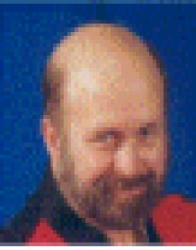
Dr. Larry Sanders, Sijo
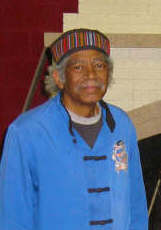
Master Sunyata Saraswati was introduced to Yoga as a child by the great teacher Paramahansa Yogananda. During a visit to Sunyata's grandmothers house when he was a young boy. Sunyata was honored by the Yogi by being given a transmission of grace. Transmission refers to a Yogic belief that spiritual information can be passed-on without words. For more thatn ten years, Sunyata went to India almost every summer and studied all the aspects of Yoga. He furthered his study on Kriya Yoga, a form of meditation that is perhaps best known for its concentration on posture and conscience beathing techniques. In the 1960s Sunyata was introduced to Tai Chi as a way of corrrecting a problem that had developed in his meditational practices. Through another teacher, a Tibetan nun, Sunyata was introduced to White Crane Tai Chi Gung, Which has been a centrtal part of his life ever since. Tai Chi Qi Gong is a stepping stone to prepare one for other Yogic practices.
Sunyata has devoted over forty years to the study and the practices of Yoga and Chinese Gung Fu Systems (Hindu, Taoist and Egyptian). In 1978, he was given the title of Goswami in bahiar India (Lineage Holder of Babaji's Tantric Kriya Yoga), the title of Sifu from the Wu Chi Tao Temple (Hong Kong), Esoteric Tibetan Taoist Chi Gung, and Nui Gung and the Taoist 8 Animals internal Gung Fu. In April 200 he was awarded the title of Sigung (Grandmaster 7th degree black sash) from Dr. Larry Sanders, Sijo, for the development of Chi Lung Tao (Way of the Spirit Dragon) internal Gung Fu. On April 2003 he was awared the title of La Su (10th degree Black Sash). Sunyata now teaches private and semi-private classes in Tibetan and Taoist healing arts, Tai Chi Gung, and Spiritual Gung Fu from his home in North Carolina.
